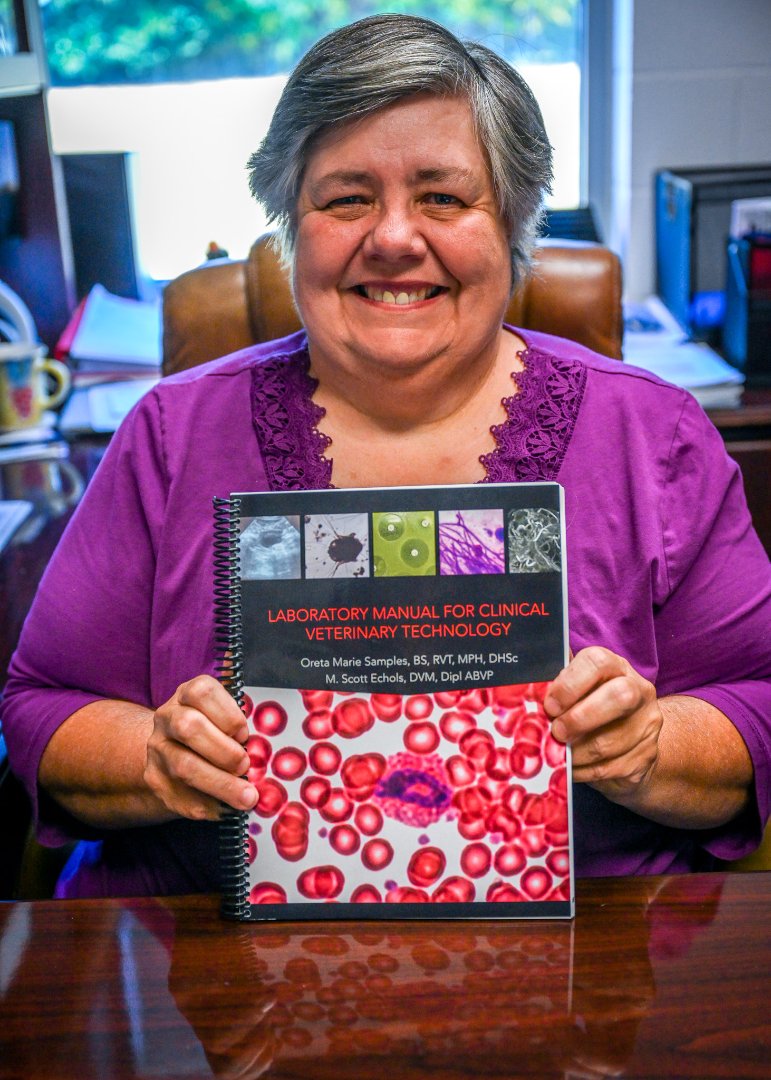A newly published laboratory manual addressing clinical pathology and chemistry of veterinary technology is the first of its kind to enable veterinary technology students and practicing technicians to excel in their careers.
Fort Valley State University assistant professor Dr. Oreta Samples co-authored the book, “Laboratory Manual for Clinical Veterinary Technology,” along with Dr. M. Scott Echols, an avian veterinary specialist.
The Master of Public Health Program coordinator said she and Echols met at a veterinary technology convention in 2009 in Reno, Nevada, where she shared her interest in publishing a laboratory manual to assist instructors and benefit students. She was already familiar with Echols as she had previously reviewed some of his books and videos during her stint as an editor for the Book Review Column of the Veterinary Support Personnel Network (VSPN), an online community for veterinarians and veterinary technicians.
“He is one of very few people in the world who does bird surgery,” Samples noted.
Echols connected her with Teton NewMedia, the premier source for veterinary and human medicine books, which led to the birth of her first published book as a co-author.
This project is a labor of love for Samples because in 1995, when she started as a veterinary technician at FVSU, lab manuals for students did not exist. Therefore, she and other instructors began developing their own lab exercises.
“I kept them in notebooks and would revise them every year. I made notes about what worked, what didn’t work and what could be added,” Samples said.

The manual is a compilation of work that she started creating back in 1995. After years of writing and collecting, Samples is proud that the long-awaited exercises are now available for veterinary technology programs around the world. There are 20 chapters that fit students’ needs. The manual also covers microbiology and a chapter on avian laboratory procedures, which Echols provided, along with photos for the book.
“Each chapter addresses a task that is required by the American Veterinary Medical Association’s (AVMA) Committee on Veterinary Technician Education and Activities (CVTEA) within their guidelines for accredited veterinary technician programs of which FVSU is one. Students must master these skills,” explained the MPH coordinator.
She added that one chapter identifies the three H’s of hematology (hematocrit, hemoglobinometer and hemacytometer). This includes the importance of and instructions on mastering the laboratory skills associated with veterinary hematology, as well as explaining what the results mean. In addition, the manual includes lab guidelines and an online portion for instructors’ references.
With this project complete, Samples is now working on a companion volume in parasitology and other major projects.
“I am so grateful to Dr. Echols for getting my foot in the door because he was the one who believed in my vision and got me started in this genre, being able to publish for veterinary technicians,” Samples said. “It was a learning process for me. I am anxious to get the next one done.”
The “Laboratory Manual for Clinical Veterinary Technology” is available on Amazon at bit.ly/3hAun1Z and on Taylor & Francis Group’s website at bit.ly/3hDd93X.

